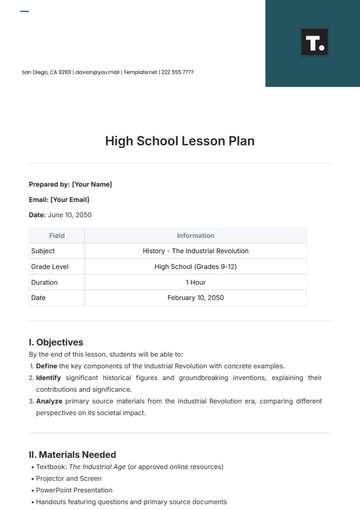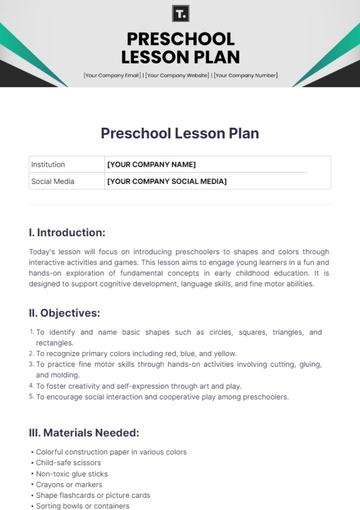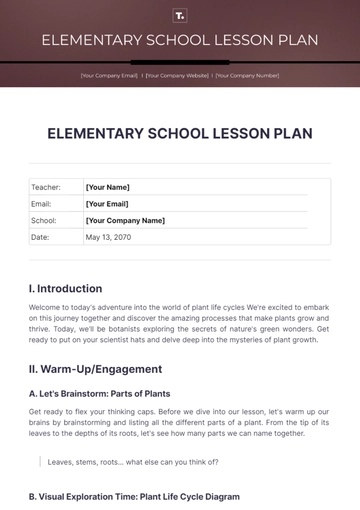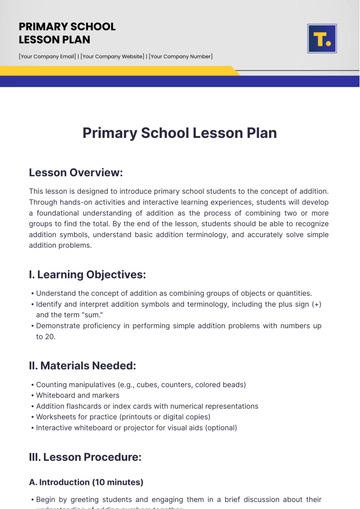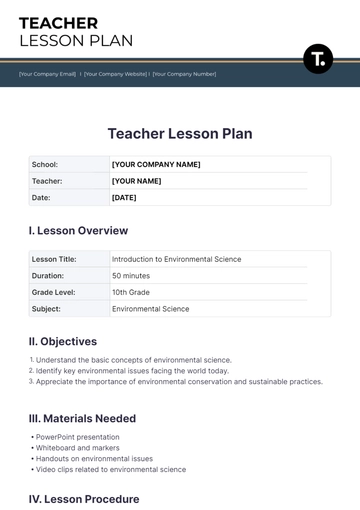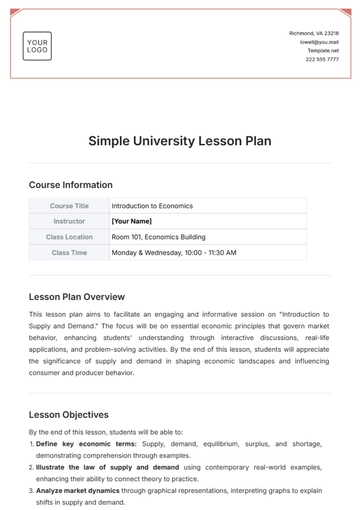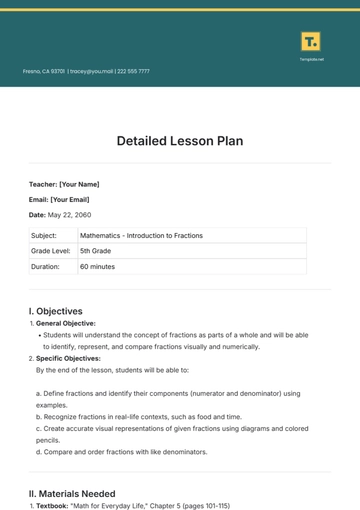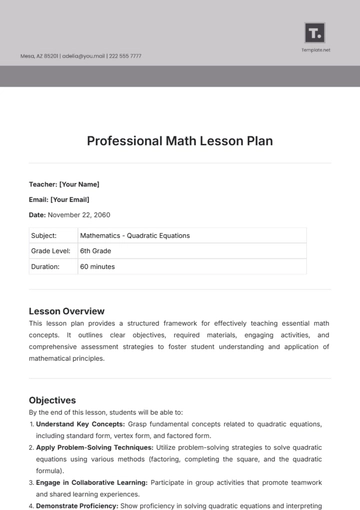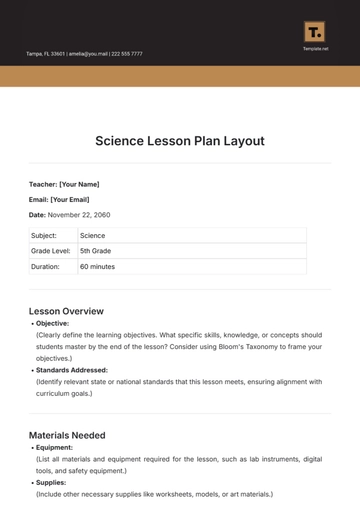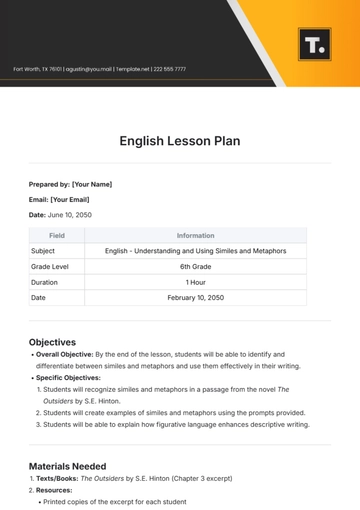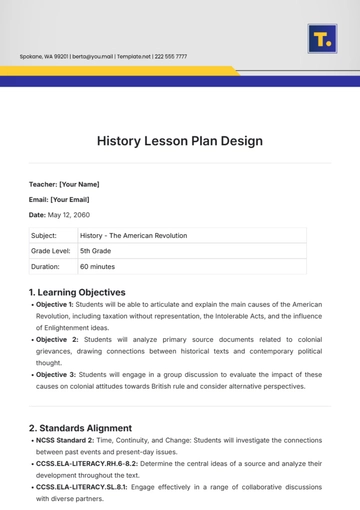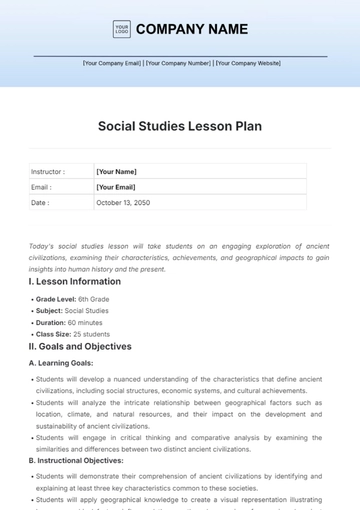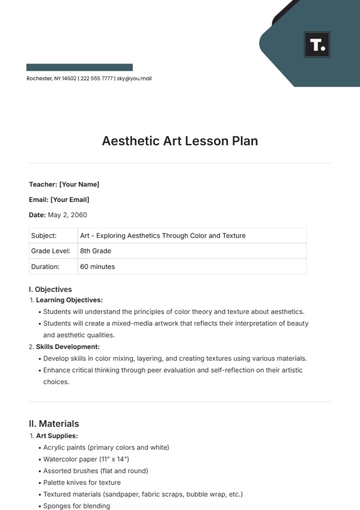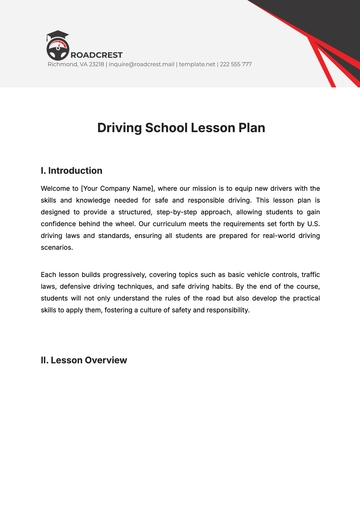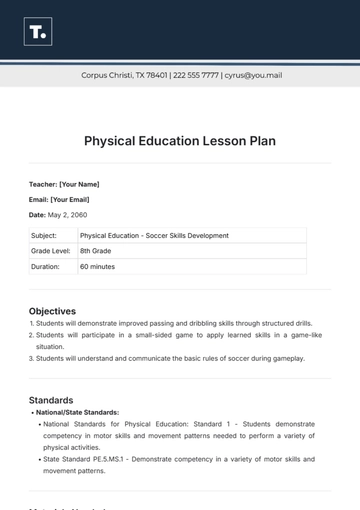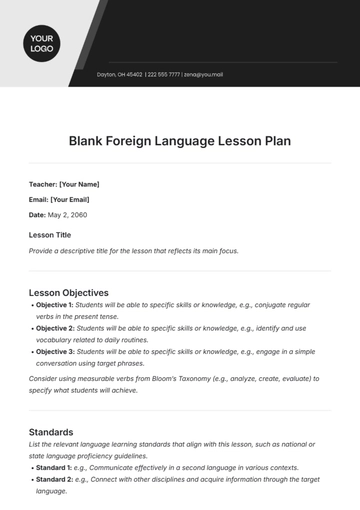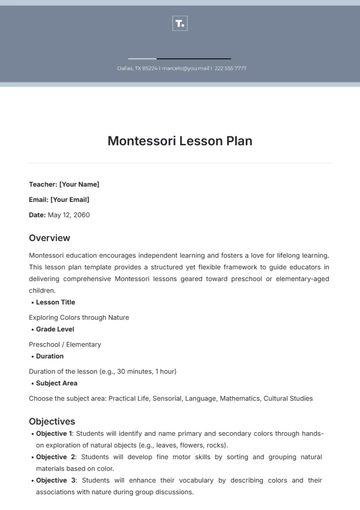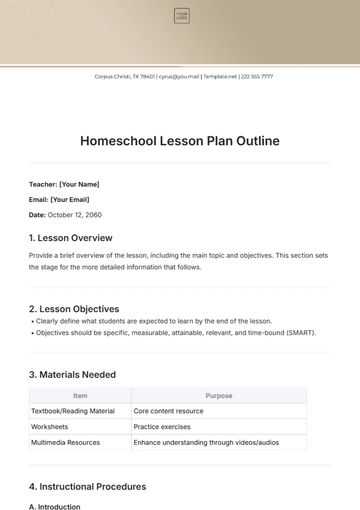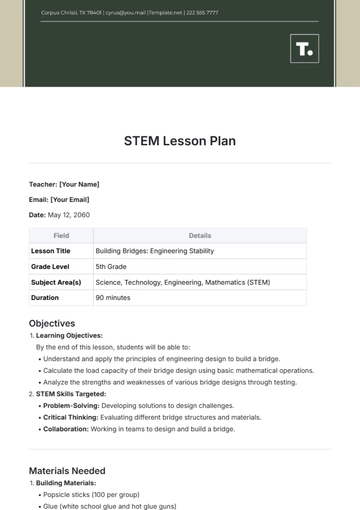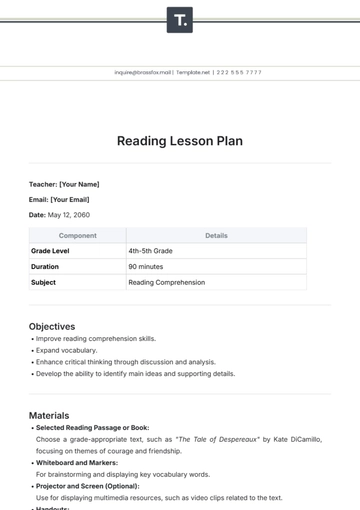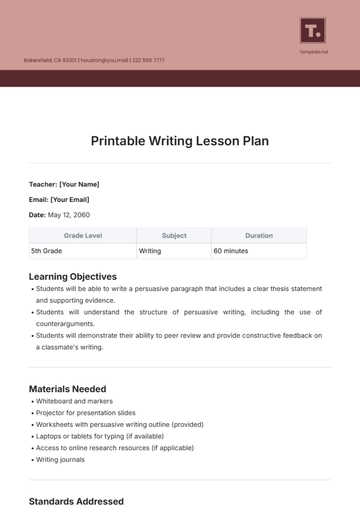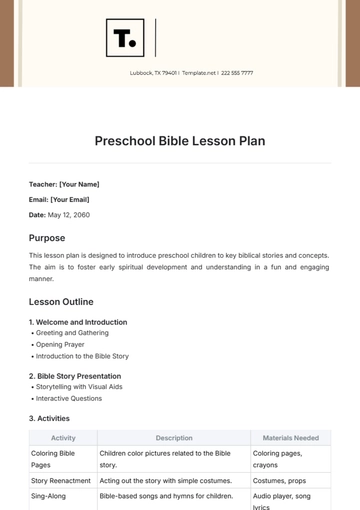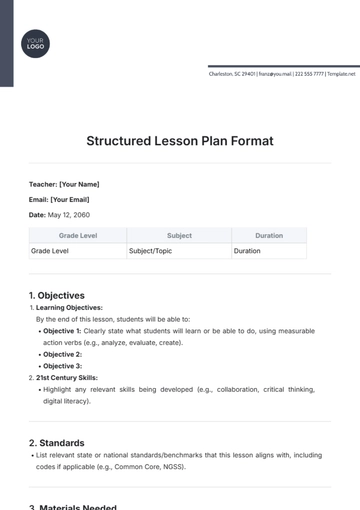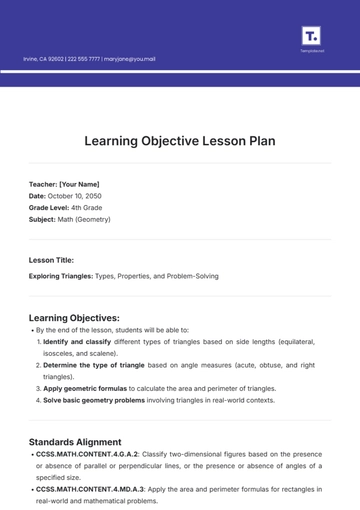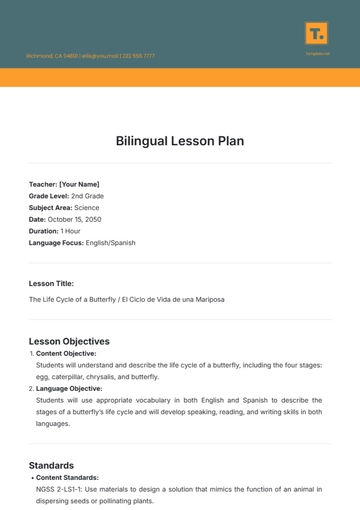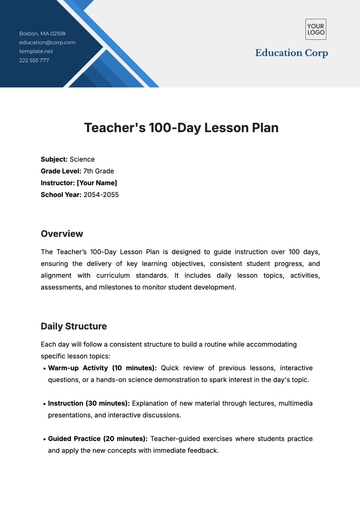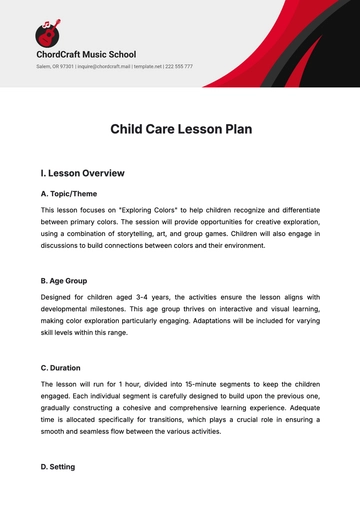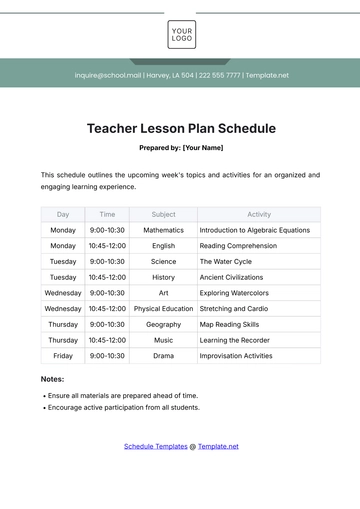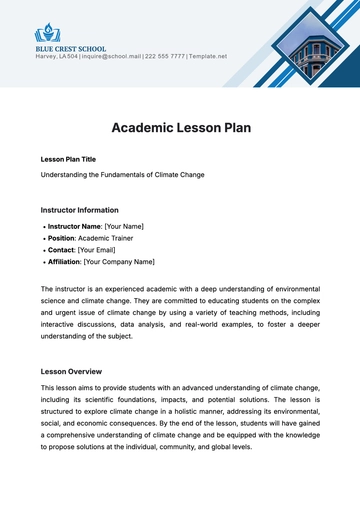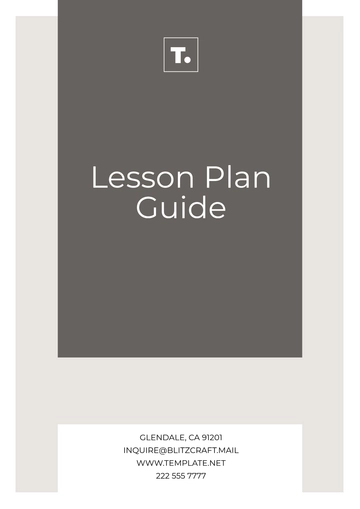Free High School Lesson Plan
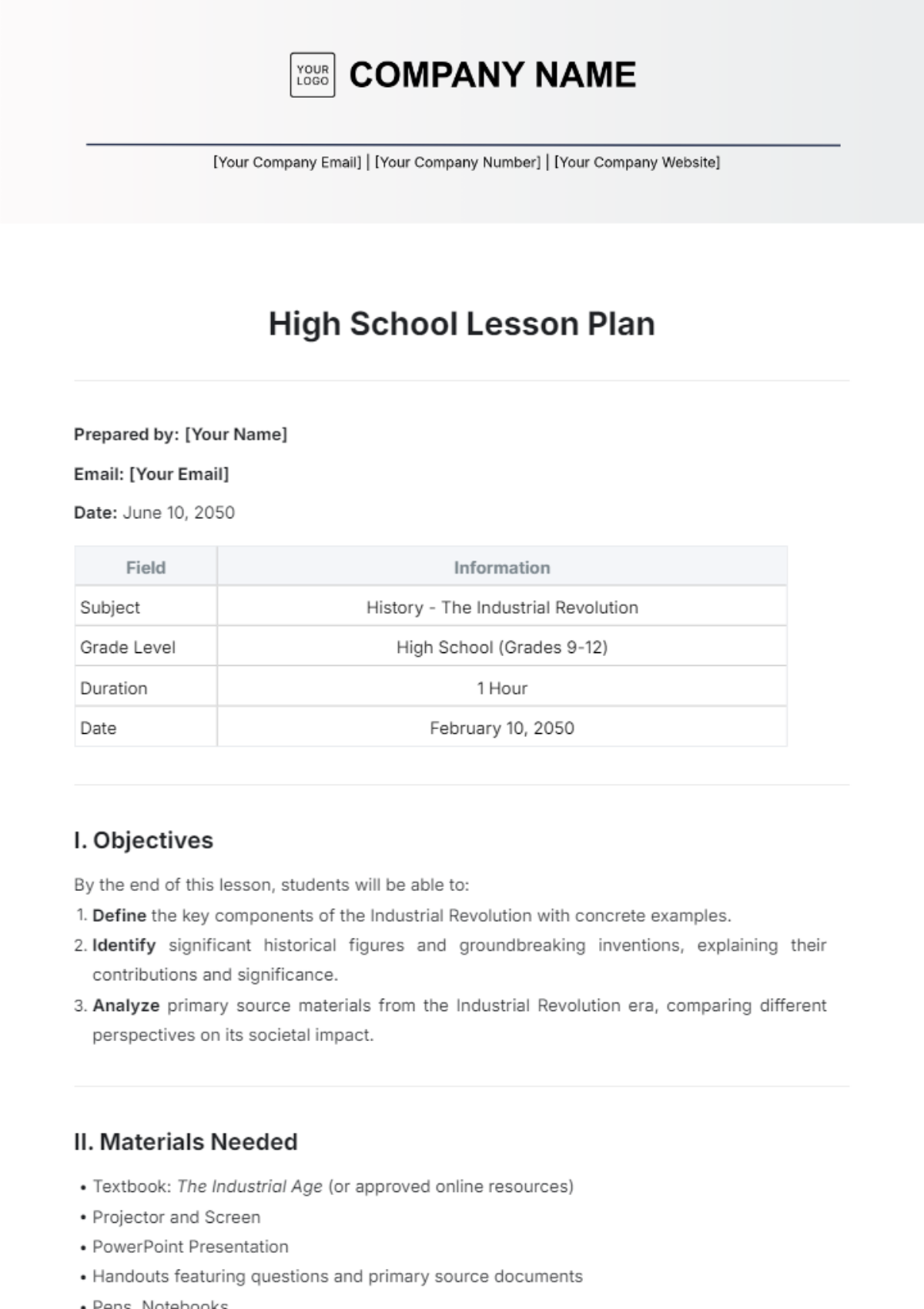
Prepared by: [Your Name]
Email: [Your Email]
Date: June 10, 2050
Field | Information |
|---|---|
Subject | History - The Industrial Revolution |
Grade Level | High School (Grades 9-12) |
Duration | 1 Hour |
Date | February 10, 2050 |
I. Objectives
By the end of this lesson, students will be able to:
Define the key components of the Industrial Revolution with concrete examples.
Identify significant historical figures and groundbreaking inventions, explaining their contributions and significance.
Analyze primary source materials from the Industrial Revolution era, comparing different perspectives on its societal impact.
II. Materials Needed
Textbook: The Industrial Age (or approved online resources)
Projector and Screen
PowerPoint Presentation
Handouts featuring questions and primary source documents
Pens, Notebooks
Video clip on key events of the Industrial Revolution
III. Lesson Activities
1. Introduction (10 Minutes):
Begin with a class discussion on the broad impact of the Industrial Revolution on today’s modern world, focusing on technology, economy, and society.
Show a brief video clip that captures significant events and technological advancements from the period.
2. Direct Instruction (20 Minutes):
Deliver a PowerPoint presentation outlining the major components of the Industrial Revolution (e.g., the rise of factories, urbanization, technological advancements).
Engage students with questions like "How do you think these inventions changed daily life?" or "What would have been the impact of living through this period?"
Encourage students to take notes and participate in the discussion.
3. Guided Practice (15 Minutes):
Distribute handouts with questions based on primary source documents (e.g., newspaper excerpts, diaries, patents of inventions).
Walk students through the analysis of these documents, guiding them to identify key perspectives and impacts of the Industrial Revolution.
4. Independent Practice (10 Minutes):
Assign students a short writing activity: “Select one invention or key figure from the Industrial Revolution and write a paragraph explaining its significance and lasting impact.”
Allow students to complete this task individually while walking around to assist where necessary.
5. Closure (5 Minutes):
Summarize the main points discussed in the lesson, reviewing key inventions and societal changes brought about by the Industrial Revolution.
Invite students to share brief reflections on how they think the Industrial Revolution continues to influence the present day.
IV. Assessment
Participation in class discussions and group activities.
Completion of the worksheet and paragraph writing task.
A short quiz at the start of the next class reviewing key concepts (e.g., major inventions, figures, and their significance).
V. Differentiation Strategies
Provide additional reading material or online resources for advanced students who wish to explore the topic further.
Offer one-on-one support or peer tutoring for students needing extra assistance during the guided practice activity.
Utilize a variety of media, including videos, graphic organizers, and primary source visuals, to support different learning styles.
VI. Reflection
After the lesson, reflect on its effectiveness: What worked well? What could be improved? Were the students engaged and did they grasp the key concepts?
Consider student feedback and suggestions for future lessons to continually enhance your approach and improve student understanding.
- 100% Customizable, free editor
- Access 1 Million+ Templates, photo’s & graphics
- Download or share as a template
- Click and replace photos, graphics, text, backgrounds
- Resize, crop, AI write & more
- Access advanced editor
Streamline your teaching with the High School Lesson Plan Template from Template.net. This customizable, downloadable, and printable template provides a comprehensive framework for planning effective high school lessons. With editable features in our AI Editor Tool, tailor the plan to your specific needs. Ensure organized and efficient teaching with this invaluable resource.
